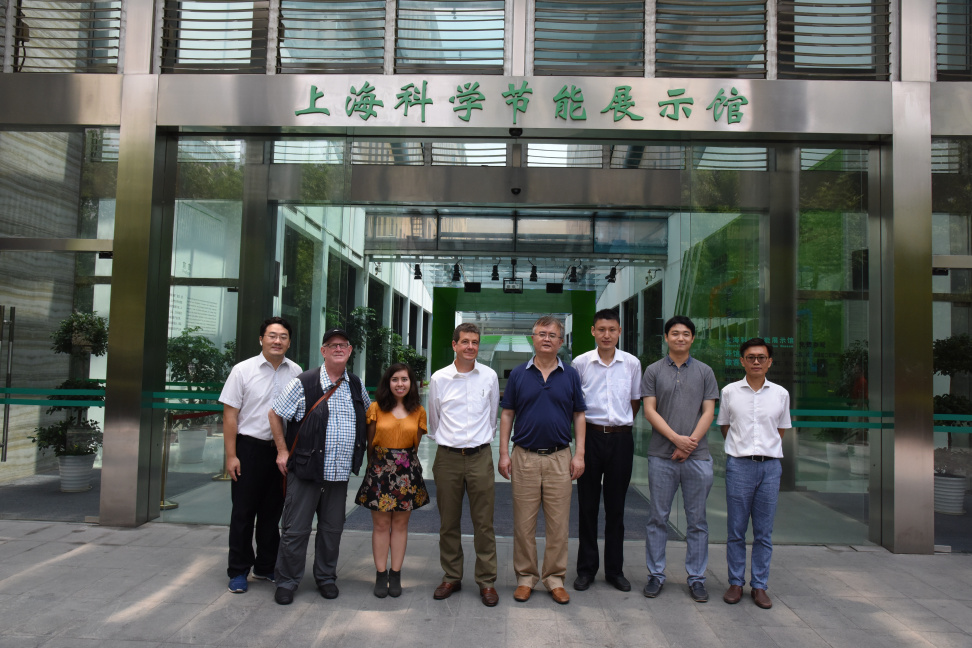
Forth in China
By: Catherine Teebay
“Let China sleep, for when she wakes she will shake the world.” Although this banal quote, often attributed to Napoleon Bonaparte, has graced the front page of every newspaper, every glossy news magazine, and digital news sites over the last 30 years, there is truly no better quote to describe the New Energy Vehicle (NEV) industry in China. In August, our Executive Director, Jeff Allen, and I traveled to Shanghai and Beijing, China to learn more about the NEV market in China and meet with key players in the region.
But let’s rewind. Why did we travel halfway across the globe to learn about electric vehicles—a topic we are supposedly well-versed in during what we were told was the hottest part of the year? As much as Jeff enjoys dumplings and I like attempting to revive my rusty Mandarin, there’s no line item for those on our expense forms.
In May 2017, Forth opened the doors of the Go Forth Electric Showcase in Downtown Portland. Although Forth—as an organization—has many roles, the Showcase is arguably our most visible work and on display for everyone passing SW 1st and Taylor. I start here because the Showcase was the impetus for our trip to China. A former Drive Oregon (Forth’s previous incarnation) board member who has worked in China for many years approached us about a potential project with the Shanghai Scientific Energy Conservation Museum. The Museum is home to dozens of exhibits showcasing everything from energy efficient appliances to a large display explaining where energy used in Shanghai comes from. Although most of the visitors are Shanghai locals, regular visitors include a lot of groups like local businesses and schoolchildren. The exhibit about NEVs is about 10 years old and the Museum is ready to update it with all of the recent change in the industry. Our team was asked to help provide our expertise and advice from the Showcase to help them in their refresh of the exhibit.
Since the Museum established their NEV exhibit, China:
- Established a national NEV mandate largely modeled after California’s ZEV mandate
- Is now the world’s largest electric vehicle market with projected sales of over 1 million NEVs in 2018 alone
- Established NEV incentives and empowered local governments to enact policies like Shanghai’s license plate restrictions
In addition to spending a day at the Museum with their team, we also met with Anyo Charging —a subsidiary of SAIC Motor, the Shanghai Electric Vehicle Public Data Center, OEMs including Volkswagen Group China and Tesla Motors, NGOs, professors and students from Tongji University, and visited the EV Zone where there are over 50 vehicles available for test drives. We were constantly impressed with all of the work happening in China.
Throughout our stays in both cities, we noticed that scooters with two-stroke engines had been replaced by electric scooters, diesel buses replaced by electric buses, shared electric mopeds were next to shared bicycles, and electric cars were seemingly in every lane of traffic. It was almost as if this might be what cities and their transportation systems increasingly look like as they continue to grow in population and density.
It was clear to us and to the Museum that the new energy vehicle landscape has drastically changed. However, even though China is now the global leader in electric car sales, there are still a multitude of obstacles that the industry is facing regardless of where you are in the world. Questions like where do people who live in multi-unit dwellings charge, how do we resolve the lack of public charging infrastructure, and when will range anxiety stop discouraging sales, are universal in who they challenge.
Ultimately, our biggest takeaway was that we have a lot to learn from China and their experiences, but we also bring learnings and expertise to the table. Mutual cooperation between organizations in China and the United States will be crucial in helping everyone to advance the industry.
The world has turned to electric transportation as one of the ways we can work to improve environmental issues and China is at the wheel. With the central government taking a bold stance on advancing electric cars and local governments empowered to design and implement their own transportation policies, we expect China to continue driving adoption not only locally, but also globally.


